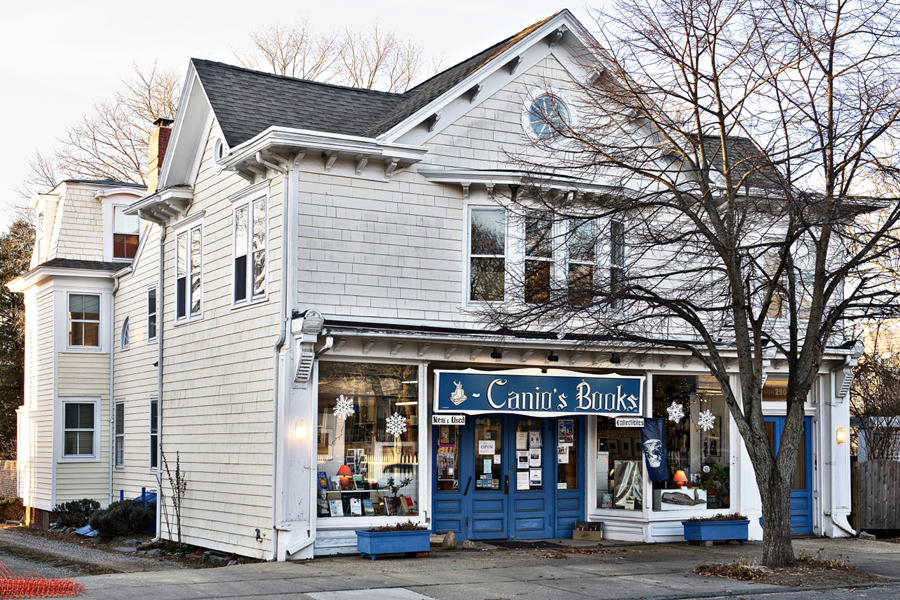Canio's Books in Sag Harbor Looks to Make a Comeback

Canio’s Books, “the soul of Sag Harbor,” as it has been called, is no more, shuttered after the landlord declined to renew the lease for the shop that has been in the historic old village for 44 years.
But the two women who have owned Canio’s since 1999 – they purchased it from the founder, Canio Pavone – are determined to reopen the shop, if not in Sag Harbor, than elsewhere on the East End.
The fight the two, Maryann Calendrille and Kathryn Szoka, are waging, has gained support from a number of residents in Sag Harbor and elsewhere.
“It’s very humbling to hear this,” Calendrille told Dan’s Papers, of the support. “We loved the shop. We were able to grow the business.”
Of the closing, Calendrille said, “It’s heartbreaking. We knew it was coming. We spent one full year scouting [for a new site]. The store is just a dark, empty space now. We’re in a strange place,” still looking for a new space.
Calendrille and Szoka acknowledge that the landlord, Martha Siegler, told them three years ago that she wanted the store vacated.
But Calendrille said, “We were working on different possibilities. We were being advised by a lawyer. We were working behind the scenes.”
When contacted by Dan’s Papers, Siegler exclaimed, “Oh my God. Doesn’t this ever die?”
Siegler noted the two women were, in her view, given ample time to prepare to vacate the 800-square-foot store at 190 Main Street, the spot where it has stood since Canio Pavone opened in 1980.
“Everybody signed off on that,” Siegler said.
She said also that she had been “subsidizing” the store for some time. The rent was $1,400 when Calendrille and Szoka took over. It grew to about $3,000 when they recently left.
“She [Siegler] likes to use that word,” Calendrille said. “I wouldn’t use that word.” What word or words would she use? She said she and her business partner should have been charged “a reasonable rent.”
“A book store is a modest business with modest margins,” Calendrille said.
The women said they asked to remain open for two months this past summer, a busy time on the East End, when they could have made some money to pay more rent. But they were denied, they said.
Siegler said at present, she plans to “clean-up” the store. “It’s a filthy mess,” she said. She does not yet have a new tenant.
As far as Calendrille and Szoka are concerned, the battle for a new spot has just begun. But some in Sag Harbor are already feeling pain at the loss of Canio’s in the village.
Scott Chaskey, the author and organic farmer who has spent decades on the East End, told Dan’s Papers he deeply misses Canio’s.
“It’s the soul of Sag Harbor,” Chaskey said. “There are other places, like the library and the five and dime store, which doesn’t exist anymore. But none of them, past or present, is like Canio’s.”
When Canio Pavone retired, Chaskey said, “We thought, ‘Oh my God.’ But these two ladies came along and they ran it in the same spirit as Canio did,” he added.
“It’s some sort of magic place. I haven’t been by there” since it closed” in late fall, Chaskey said. “It’s a huge vacancy that exists in everybody’s mind.”
Sag Harbor has a long literary history.
John Steinbeck and his wife, Elaine, lived in a home in Sag Harbor from 1955, until he died in 1968. Steinbeck wrote one of his best-known works, The Winter of Our Discontent, at the home on John Street. He was known to walk around the village, sometimes in disguise. Baron’s Cove, now a hotel, was once a hotspot for the literary crowd.
The playwright Langston Hughes was a frequent visitor to Sag Harbor, visiting the historian William Pickens. According to legend, the two would read poetry on Pickens’ porch. Herman Melville’s Moby Dick played homage to Sag Harbor: The harpooner Queequeg decided to remain a “heathen” after witnessing the behavior of Christians. The novel says, “Arrived at last in old Sag Harbor; and seeing what the sailors did there…poor Queequeg gave it up for lost.”



